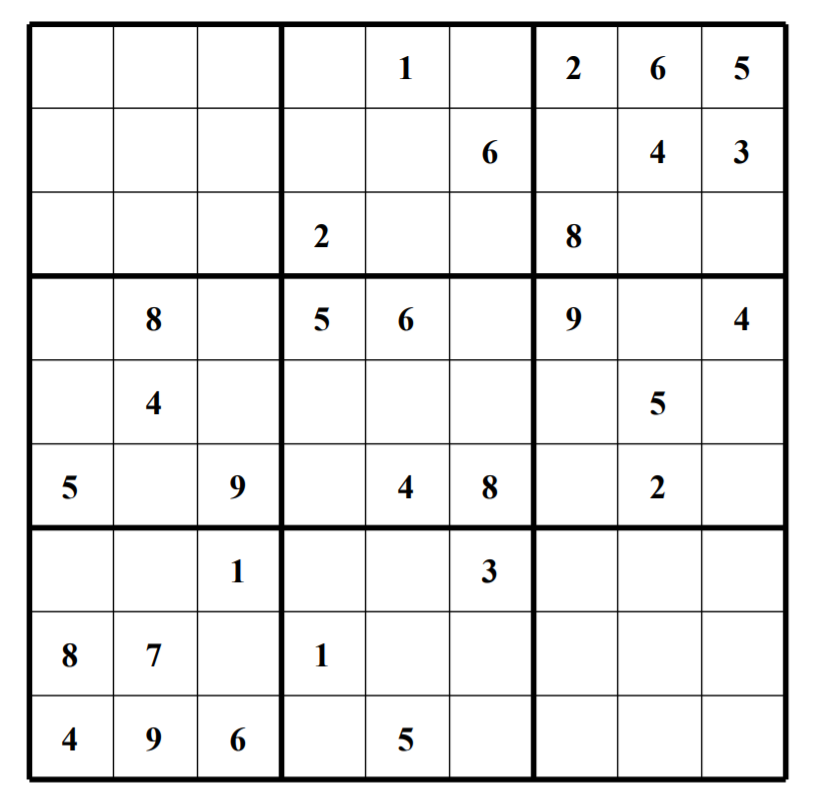Math should be taught differently
The discussion of how mathematics is being taught in the United States is often fixated on attainment. From Pew Research’s statement “[t]he most recent PISA [a standardized assessment] results, from 2015, placed the U.S. an unimpressive 38th out of 71 countries in math...” to USA Today’s headline “Math scores stink in America,” the focus on performance rarely addresses the actual problem: how the U.S. educational system teaches math to its students. The main issue of math presentation in the U.S., according to UCLA professor James Stigler, is the focus on formulas and procedures without proper context or explanation. The student is then left helpless when the ideas underlying those formulas and procedures show up in higher maths and on standardized assessments.
The naive solution of having students practice more does not solve the issue because students are just applying what they were shown in class instead of truly understanding the material, and students in the U.S. already practice enough of what they are shown in class. According to a paper in the journal of Educational Psychology, more practice only increases scores to a point of around 90 minutes of practice per day before it levels off. Even the difference between 60 to 90 minutes of practice is inconsequential, in the author’s words, suggesting that adding more of the same work would not help student performance. Although changes to the U.S.’ math curriculum such as New Math and Common Core have been implemented, both were utter flops.
One of these revolutions was New Math. New Math was formed in response to the Cold War when the U.S. Department of Education was worried about being outmatched by the Soviet Union’s educational system. According to a journal article called “The ‘New New Math’?: Two Reform Movements in Mathematics Education” by Terese Herrera and Douglas Owne, New Math began in the 1960s aimed to improve math education by treating it more like a science, specifically by being more interactive and investigative in nature. The aim of the program was to hold off on introducing abstractions like the addition sign before students understood the foundations of what adding was through experimentation. Although the idea sounds good, the program ultimately failed due to it confusing students and parents, and therefore has fallen out of favor with most educators.
According to Forbes, the next big change to the U.S. math curriculum occurred when the Common Core curriculum was developed to standardize education across the U.S. in the early 2000s as a response to educators observing that students lacked “number sense,” the ability to reason abstractly about numbers. The curriculum in this revolution focused on introducing alternative techniques for common operations aimed at obscuring less of the logic behind them. For example, Common Core’s way of proving 34 - 9 = 25 starts at 9. A student would then add smaller values until getting to 34 and, finally, sum the smaller values to find 25 and thus “proving” 34 - 9 = 25. However, according to a large-scale government funded study by Center for Standards, Alignment, Instruction, and Learning (C-SAIL), the average test score on the National Assessment of Educational Progress (NAEP), has declined significantly since Common Core’s adoption due to being too complicated with not enough focus on correctness, according to the Pioneer Institute in their summary.
As shown with Common Core and New Math’s failures, simply trying to explain the reasoning behind all of the formulas and procedures taught is impractical for the educator and confusing for all parties. Instead, educators need to think about student readiness and the potential upside and downside of teaching the reasoning behind each formula and procedure. Take for example the concept of subtraction; it needs to be understood with intuition, but a proof of the vertical subtraction algorithm is not necessary to advance in math. Contrarily, something like the determinant’s formula’s derivation needs to be explained because it is easier and more applicable to other contexts to derive it than to simply memorize it and gives students an important intuition for what the operator is.
Additionally, the sequence of math courses offered in the United States does not make sense. In most U.S. high schools, Algebra 1, Algebra 2, and Geometry are taught as discrete classes even though the subjects are very much interconnected. Two approaches are very common. The first approach Algebra 1, Algebra 2, and then Geometry suffers because it does not exploit the fact that Algebra is an abstract representation of Geometry to teach the subject. However, the alternative approach of Algebra 1, Geometry, and Algebra 2 also harms students because most have to play catch up in Algebra 2 because they have forgotten some of Algebra 1 from not practicing it in Geometry. And, as some other topics like probability sometimes do not fit into a specific block, these topics are unfortunately not well taught or reinforced. Maybe integrating Algebra 1, Geometry, and Algebra 2 into a three year progression titled Math I, II, and III will assist course creators in teaching the interconnectedness of these subjects. Japan, Switzerland, and the Netherlands - who all typically score higher than the U.S. - successfully have a system like this. Math 1 teaches students the operations of Algebra 1 and their properties, how to solve univariable equations, graph functions while also teaching the basics of Geometry (congruence and basic shapes). Math 2 continues with polynomials, probability, more advanced Geometry, and focuses on Analytic Geometry (using Algebra). Math 3 goes into more advanced functions, sequences and series, basic trigonometry, and Geometric Modeling.
With branches like Number Theory, Algebra, and Geometry, the beauty of mathematics is rich and expansive enough that it has the best opportunity to avoid being a snoozefest. However, boredom is yet another issue with school’s presentation as shown by the fact that less than a third of 11th graders report feeling engaged in their classes, according to a 2015 Gallup study. YouTube channels like 3blue1brown, Numberphile, Epic Math Times, and Flammable Maths routinely capture millions of views, proving that math really can be fun even on obscure topics like the Quartic formula. For example, a video by Epic Math Times explains the following: if you were to draw some number of equispaced dots, called lighthouses, on a circle, consider one dot as being an observer, draw lines between the observer and other lighthouses, and multiply the resulting distances, you will always find that product always exactly equals the number of lighthouses. The proof of this theorem invokes the use of complex numbers, geometry, and limits, so it may be a good springboard to the topic of proof construction with complex numbers to make the topic seem more interesting.
Although the current state of U.S. mathematics education is below-average, it can be improved upon. The prior failures do not rule out future success, but they do serve to guide us on what not to do in the future. Hopefully, the current state of U.S. mathematics education can be improved by changing the presentation to be more focused on the ideas behind the formulas and procedures, making the course progression and descriptions to be more interconnected, and by fostering interest by posing interesting examples to students.

 Editorial Notebook
Editorial Notebook
 Editorial Notebook
Editorial Notebook